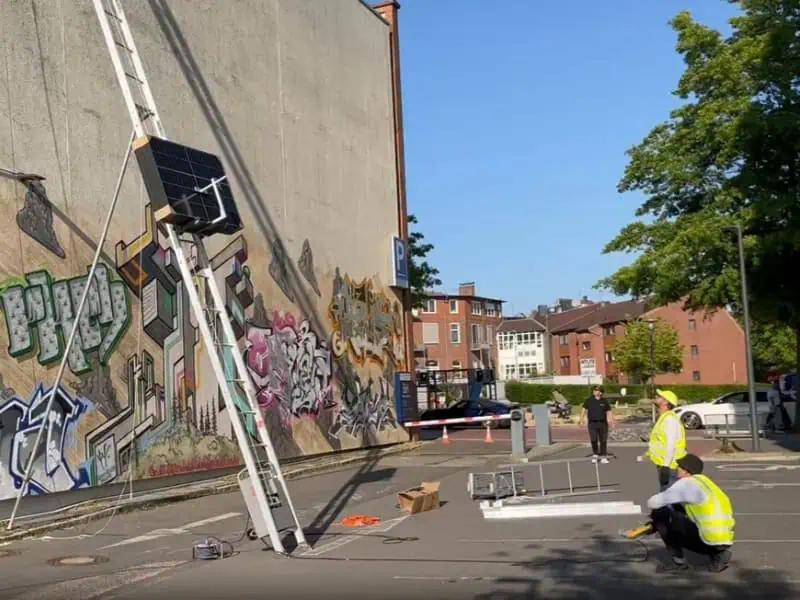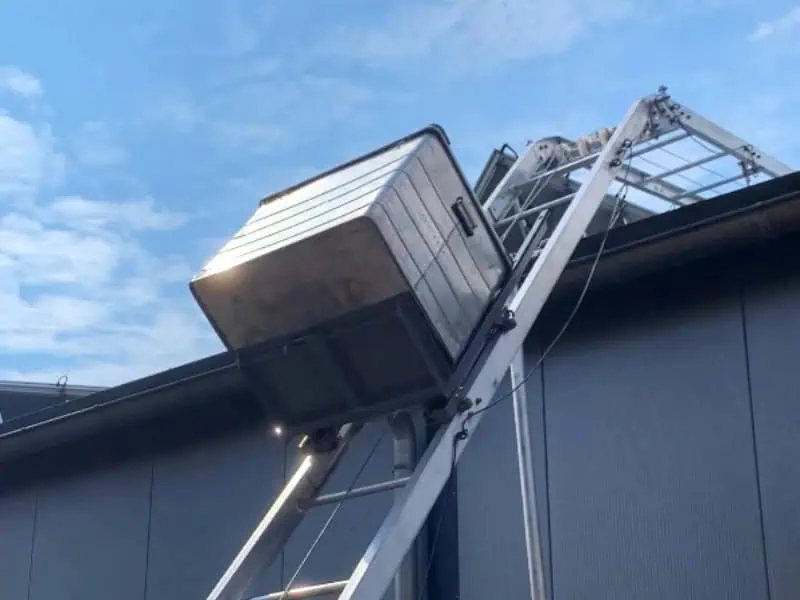Delays while shuffling tools and materials up a structure often eat into your daily schedule — and that’s exactly where power ladder rental becomes a game-changer for busy worksites. Imagine cutting hours off lift cycles, reducing manual strain, and improving safety at the stroke of a switch. With rising demands on site productivity and stricter safety rules, every minute lost matters. This article explains how innovative lifting gear enhances workflows, protects crews, and ensures compliance without disrupting your core trades.
What common on-site delays can power ladder rental help prevent?
Power ladder rental helps sidestep frequent hold-ups in elevated work by smoothing the flow of materials, tools, and personnel. Below are the setbacks often encountered on site — and how powered lifts mitigate them. Here are the common on-site delays that power ladder rentals can help prevent:
- Material transit bottlenecks occur when manual hoisting or pulley systems slow down the workflow.
- Crew waiting times: Trades waiting for lifts to arrive or finish cycles.
- Lift equipment fatigue failure: Mechanical breakdowns of conventional hoists or ladders.
- Load mismatch issues: Small lifts require multiple trips, while large loads necessitate custom gear.
These delays collectively drag out timelines. By introducing a battery ladder hoist, work proceeds steadily. Sites regain consistency, not unpredictable “stop and start” phases. In summary, power ladder rental eliminates many of the routine logistical choke points on site, making scheduling more reliable and reducing frustration for all trades.
Why do traditional lifting methods fall short compared to power ladder rental?
Traditional lifting options — rope pulleys, manual hoists, scaffold adjustments — frequently struggle under heavier loads or extended cycles. Battery-powered systems outperform them in key dimensions. Here are the key limitations of traditional lifting methods that power ladder rentals overcome:
- Limited capacity and speed: Manual methods typically handle small loads slowly, making them ill-suited for large, heavy items.
- Higher labour intensity: Manual hauling demands more physical labour and coordination.
- Increased safety risk: Conventional systems rely heavily on human control, making them more prone to mishandling.
- Operational downtime: Manual or older machinery may require more frequent rest or maintenance.
Because power ladder systems integrate drive motors and controls, they handle heavier loads faster with less human exertion. They reduce the risk of strain injuries and cut the need for constant oversight. In short, they outperform traditional alternatives in durability, consistency, and crew safety. Additionally, crews can benefit from safe and portable lifting equipment, which minimises fatigue while maintaining performance standards.
How can smarter lifting systems improve crew coordination and job site flow?

Integrating a power ladder lift into workflows enables crews to sync more effectively, reduces bottlenecks, and allows trades to plan around dependable lift cycles. Here are the ways more innovative lifting systems improve coordination and site efficiency:
- Predictable cycle times: Every load up/down takes a known time, allowing trades to sequence their tasks effectively.
- One-person operation simplifies logistics and alleviates coordination overhead.
- Remote or automatic controls: less communication lag when signalling lifts.
- Load staging zones: well-defined inbound/outbound zones reduce chaos.
Teams don’t crowd the hoist waiting. Each trade knows when its turn comes. Communication overhead diminishes. Everyone’s tasks link together smoothly. By combining lift cycles with site planning, crew idle time is significantly reduced. The whole workflow flows better. Understanding the benefits of hiring a builder hoist can further refine team efficiency, especially when managing multi-level projects.
Which industries benefit most from using power ladder rental equipment?
While many construction trades benefit from powered lifts, some industries experience robust returns when integrating ladder hoists on-site. Here are the sectors that gain the most from power ladder rental equipment:
- Residential construction (multi-storey homes): where materials must reach upper levels efficiently.
- Solar and rooftop installation: panels and frames needing repetitive vertical lifts.
- Facade and cladding works: heavy panels, glass, or precast elements.
- Telecommunications and tower work: gear and parts lifted up masts or structures.
- Maintenance and retrofit projects: where scaffolding is limited but vertical access is essential.
These industries benefit because lift downtime, handling weight, and access constraints are everyday concerns. Power ladder rental delivers a flexible, faster solution. In conclusion, many vertical trades enjoy productivity and safety gains when they adopt these lifting systems — especially where repeated lifts or heavy parts are involved. Australian safety standards for working at heights also outline how these practices reduce hazards when operated correctly.
What features make a battery-powered ladder hoist easy to transport and operate?
For rental use, usability and transportability are key. A well-designed ladder hoist should feature intuitive controls, compactness, and robust safety systems. Here are the essential features that make a battery-powered ladder hoist portable and efficient:
- Modular, lightweight frame design: enables easier ingress/egress to tight sites.
- Quick-connect rail sections: simplify setup and teardown.
- Onboard battery and charger: self-contained power reduces dependence on site generators.
- User interface with safeguards: load sensors, emergency stop, and anti-rollback features.
| Feature | Importance | Benefit for site operations |
| Modular rails | portability & adaptability | faster setup in tight or uneven spaces |
| Onboard power | self-sufficiency | reduces reliance on external power sources |
| Safety sensors | risk mitigation | prevents overloads or misfeeds |
| Quick connections | reduce setup time | cuts labour cost and site disruption |
These design innovations are central to efficient power ladder rental options for modern job sites, which combine easy transport with durable operation under Australian conditions.
Additionally, ideal rental units include foldable or compact storage modes and easy transport carts. These features ensure a ladder hoist is not just powerful, but also practical. They maximise uptime and reduce friction in deployment and use.
How can power ladder rental help businesses stay compliant with height safety standards?
Safety regulations for working at heights place strict obligations on how lifts, access systems, and material handling must be managed. Using a reliable powered system can help meet those standards without constant manual workaround. Here are the safety measures and compliance advantages linked to power ladder rentals:
- Controlled lifting zones: restrict where gear and personnel may travel vertically.
- Load monitoring: ensures operations adhere to rated capacities.
- Fall protection integration: compatible with lanyards, harness systems, and tie-off points.
- Audit logs and safety records: data from the hoist can support compliance reporting.
Integrating a compliance-focused system helps avoid penalties or work stoppages. Workflows stay safe, traceable, and aligned with regulations. Thus, power ladder rental not only speeds up tasks but also helps protect your site legally and ethically, reducing risk exposure.
Final thoughts on improving construction workflows with modern lifting solutions
Modern construction demands smarter toolsets to keep pace with safety and efficiency expectations. By incorporating a reliable ladder hoist into your project plan, you reduce delays, improve safety, and provide your crews with a consistent rhythm. Trades no longer jockey for lifts or wait for manual cycles. Logistics simplifies risk drops. Discover how Conveying & Hoisting Solutions supports safer site operations by integrating powered ladder systems, transforming workflows, bringing predictability to lifting, and elevating operational safety and compliance — no drama, just more innovative solutions.




